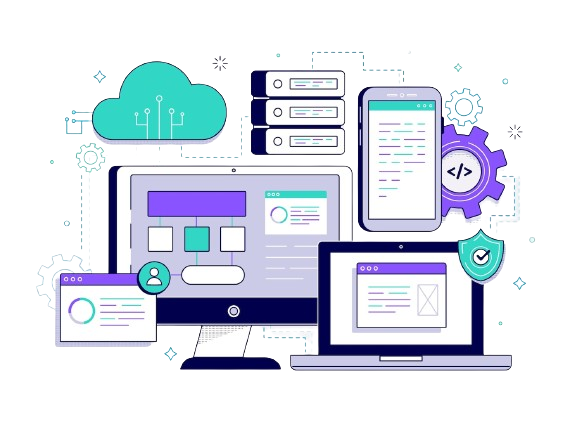Monolith to Microservices Adoption & Migration Experts: Pioneering the Future of Scalable Software Architecture
In the rapidly evolving world of software development, organizations must remain agile and scalable to meet the growing demands of modern users. One of the most significant architectural shifts that companies are embracing is the transition from monolithic applications to microservices. This paradigm shift allows businesses to be more adaptable, resilient, and efficient. At the heart of this transformation are Monolith to Microservices Adoption & Migration Experts—specialists who guide organizations through this intricate journey, ensuring a smooth transition while minimizing disruption and optimizing long-term success.

Understanding Monolithic and Microservices Architectures
Before diving into the migration process, it’s essential to understand the two architectural styles. A monolith is a single unified unit where all components—such as the user interface, business logic, and database—are interconnected and interdependent. This architecture enables faster initial development; however, as an organization grows, monolithic systems can become cumbersome, leading to challenges in scalability, maintainability, and deployment.
The Benefits of Transitioning to Microservices

- Scalability: Microservices enable organizations to scale specific pieces of the application rather than the entire system, optimizing resource utilization and reducing operational costs.
- Improved Development Agility: Teams can work on microservices in parallel, allowing for faster development cycles and quicker time-to-market for new features and updates.
- Resilience: In a microservices architecture, if one service fails, it does not bring down the entire application, hence promoting system reliability.
- Technology Diversity: Different microservices can be built using varied technologies, allowing teams to select the best tools for specific tasks without being tied to a single technology stack.
- Enhanced Maintainability: Smaller, focused codebases are often easier to maintain. Changes can be made quickly, decreasing the time spent on troubleshooting and repairs.
The Role of Migration Experts
Monolith to Microservices Adoption & Migration Experts provide a structured and comprehensive approach to migration, encompassing the following key aspects:
Assessment & Planning
The journey from monolith to microservices begins with a thorough assessment of the existing system. Migration experts conduct detailed evaluations of the application's architecture, identifying areas that are suitable for decoupling into microservices. They take into account the business objectives, performance requirements, and scalability needs to create a clear roadmap for the migration process.
Service Identification & Decomposition
One of the most critical stages in the migration process is identifying which components of the monolithic application can be refactored into microservices. Experts help determine the boundaries of each microservice, ensuring that they are properly aligned with the business functions they represent. This decomposition phase requires a careful balance to avoid creating overly granular services, which could lead to unnecessary complexity.
Infrastructure & Platform Selection
With microservices, infrastructure plays a crucial role in ensuring smooth operations. Migration experts recommend cloud-native platforms and orchestrators like Kubernetes, Docker, and serverless technologies that can efficiently manage and scale individual services. They also ensure that the infrastructure is optimized for continuous integration, continuous delivery (CI/CD), and automated testing to streamline development and deployment pipelines.
Data Management & Communication
One of the challenges of microservices is handling data consistency and communication between services. Migration experts design robust communication patterns using RESTful APIs, message queues, or event-driven architectures to facilitate seamless interactions between services. They also address data storage strategies, ensuring that microservices can manage data independently without compromising consistency or performance.
Security & Governance
With microservices, security considerations become more complex due to the distributed nature of the architecture. Migration experts implement security protocols such as OAuth, JWT tokens, and API gateways to secure communication between services. They also establish governance policies to manage service versioning, access control, and compliance across the entire system.
Deployment & Monitoring
Deployment in a microservices environment requires a different approach than in monolithic systems. Migration experts facilitate the setup of CI/CD pipelines that enable the automatic testing and deployment of individual services. They also implement monitoring and logging tools that provide real-time insights into the performance and health of each service, ensuring that issues can be quickly identified and resolved.
Benefits of Engaging Monolith to Microservices Experts
Reduced Downtime and Risk Mitigation
Migration experts apply best practices to minimize downtime during the transition, ensuring that critical business processes are not disrupted. By proactively identifying potential risks, they create strategies to mitigate them before they escalate into problems.
Faster Time-to-Market
Microservices enable faster development cycles and more frequent releases. With the guidance of migration experts, organizations can accelerate their time-to-market for new features and services, staying ahead of the competition.
Scalability and Flexibility
Microservices are inherently scalable, allowing organizations to scale individual services based on demand rather than scaling the entire system. Migration experts ensure that the architecture is designed to handle varying loads efficiently, providing long-term scalability and flexibility.
The Challenges of Migration
While the benefits of microservices are numerous, migrating from a monolithic architecture is not without its challenges. Here are some key hurdles organizations may encounter during the transition:
Cultural Shift: Migration necessitates a shift in organizational mindset. Teams need to embrace new workflows, responsibilities, and collaboration methods that support microservices development.
Data Management: In a microservices architecture, each service may require its data storage solutions, potentially leading to data consistency challenges and complexity in managing distributed data.
Infrastructure Complexity: Managing multiple microservices increases operational complexity. Organizations often need a robust infrastructure, including orchestration, monitoring, and security solutions.
Communication Overhead: Microservices rely heavily on communication between services, which can introduce latency and the potential for network errors that must be carefully managed.
Incremental Changes: Transitioning to microservices is seldom a one-time event; organizations often have to incrementally refactor and test various components, making project timelines and budgets difficult to estimate.
Speak With Expert Engineers.
Contact us by filling in your details, and we’ll get back to you within 24 hours with more information on our next steps

Please fill out the contact form

Call Us
United Kingdom: +44 20 4574 9617

UK Offices
Business Address: 70 White Lion Street, London, N1 9PP
Registered Address: 251 Gray's Inn Road, London, WC1X 8QT
Schedule Appointment
We here to help you 24/7 with experts

